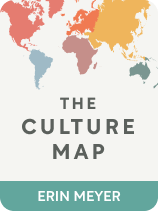

This article is an excerpt from the Shortform book guide to "The Culture Map" by Erin Meyer. Shortform has the world's best summaries and analyses of books you should be reading.
Like this article? Sign up for a free trial here .
Do you work in a culture that’s very different from yours? What challenges does that bring?
Working in a different culture brings a lot of unknown unknowns—you don’t even know what you don’t know. In her book The Culture Map, author Erin Meyer provides some tips for working effectively across cultures.
Here are some things to keep in mind if you work in a different culture, according to cultural communication expert Erin Meyer.
Working Effectively Across Cultures
Working in a different culture brings a host of unique challenges. The first step to becoming an effective cross-cultural businessperson is to understand how your culture works and how it differs from other cultures. We tend to assume that everybody works the way that we do because our way is the “normal’ way. It’s only when we first understand how our culture is unique in some capacity that we become more able to appreciate and work with the differences in other cultures.
(Shortform note: Meyer focuses exclusively on national cultures, so in this strategy, she’s referring to understanding only how your country’s culture has affected your work. But this finding is also true for other kinds of cultures that we may be parts of. In addition to understanding our national culture, looking at what other kinds of cultures—our gender and generation, for example—have influenced us is also an essential business skill.)
Be wary of lumping cultures together for the wrong reasons.
Many of us assume that cultures that are geographically close to each other must be similar. Sometimes, this is true—Japan and South Korea are both high-context cultures. But we’ve seen several examples throughout this summary that don’t fit that pattern. For example, France and Germany share a border. However, France is a higher-context culture, while Germany favors low-context communication.
As such, Meyer reminds us that geographical proximity is not necessarily an indication of cultural similarity. Be wary of acting the same way in different places just because they’re close to each other.
(Shortform note: Why might cultures that are near each other share similar features? We’ve seen throughout the summary that sometimes, it’s because they have a shared history—like they were both part of the Roman Empire. Another reason may be that they have similar landscapes. The academic discipline of cultural geography is based on the idea that landscapes and cultures have a circular relationship: A country’s landscape influences the culture that develops there, and this culture influences the landscape in turn.)
Meyer also cautions against lumping cultures together because they’re similar in one respect.
For example, Australia and Spain have similar attitudes towards feedback and fall in the middle of the feedback spectrum. As such, you might be tempted to assume that they also have similar attitudes about communication. This is not the case. Australia is one of the lowest context countries in the world, but Spain falls in the middle of the communication spectrum as well. So if you communicate to a Spaniard just as you would to an Australian, you might offend the Spaniard.
So, Meyer states, it’s important to consider each spectrum individually. Don’t create relationships between countries where there are none.
(Shortform note: Remember, too, that just because cultures are similar in one spectrum doesn’t mean the same behavior will be tolerated in both. One example is communication: High-context cultures both send unspoken messages, but the same words can have dramatically different meanings if the cultures’ histories and social norms differ dramatically. Another is scheduling: If you assume that since being five minutes late in one monochronic culture is no big deal, you can be five minutes late in all of them, you’re in for a surprise.)
Be patient and flexible.
Adjusting your behavior to others’ cues, especially when you don’t always understand them, requires patience and adaptability. But when you can utilize these skills effectively, you will be a powerful asset to any organization. (Shortform note: Struggling to become more patient? Practice by waiting for things you’re excited about. The more you wait, the more patient you’ll become.)
Remember that, while culture is an essential piece of the puzzle, it is only a piece.
Our personalities aren’t defined exclusively by culture, but we are all heavily influenced by the cultures we grew up in. So in an increasingly globalized world, the ability to discern between individual quirks and evidence of a cultural pattern is an essential leadership skill.
This is nothing new: Leaders have always needed to separate generally accepted ideas about human behavior from the reality of the individuals in front of them. What’s new is the increasing likelihood that we will encounter people in the workplace with cultures vastly different from our own.
While this can be greatly challenging, it can also be greatly rewarding, as you learn new practices and ways of thinking that enrich your life.
(Shortform note: If culture is just another piece of the puzzle, it follows that learning to become a better leader in general can also improve your effectiveness at managing people across cultures. But as we’ve seen, effective business leadership differs among cultures, so following traditional Western business advice may backfire. We’ve previously suggested reading business/leadership books from the country you’ll be working with. But for more generally applicable leadership advice, consider reading Sun Tzu’s The Art of War. Since the original text is geared towards military conflict in Asia, you may find it easier to interpret these strategies to fit an intercultural context than you would a regular business book.)

———End of Preview———
Like what you just read? Read the rest of the world's best book summary and analysis of Erin Meyer's "The Culture Map" at Shortform .
Here's what you'll find in our full The Culture Map summary :
- The eight axes you can use as a framework to analyze cultural differences
- How to better relate to those of another culture to accomplish business goals
- How the Vikings have more gender equality than we see today






